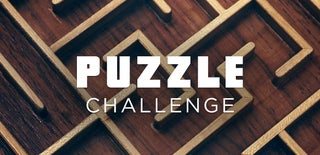Introduction: Sequential Stackable Geometric Forms
This simple puzzle was inspired in some descriptions of some gaps in more simple puzzles for children that need special attention. My girl friend, that works with children, some with cognitive differences that need some special attention, uses this kind of games to get children attention and develop skills.
This puzzle fits in every children education program, introducing to math, geometry and logic.
As known, depending on the age of the child and developed program for children, stack with a sequence can be a valuable exercise.
Geometric because it can be useful to introduce some simple math, such as counting sides of each piece, stacking by side number and order, and because it fits very easily with rounded edges.
This game fits to any child in a wide age range.
My goal was to create the sequential stackable game that could be printed easily, at home or in school, in any cheap FDM (FFF) printer and share it with everyone that need or is interested in this kind of puzzles.
The challenge was to keep it cheap without losing the point. So I came with those forms that can be replicated even in wood, that stacks inside of each other.
There are 2 versions of the same game with the slight difference in height of each form, helping achieving two different fine motor skills levels.
Step 1: You Need
Access to a 3D Printer and some colorful PLA. Color is a very good way to maintain children focused.
Be bold and do it in wood. I don't have access to a CNC or carpenter skills, but wood is a much better material for children (and maybe everyone). If you need any kind of 3D extra file to accomplish it, please send me a message and I will try to get it and send it to you.
Step 2: 3D Printing It's Easy
You don't need supports or anything else to get this job done. Only printing time.
I've printed it with the following settings:
PLA
Layer height 0,3mm
Nozzle 0,6mm
7% infill
1mm wall
3600mm/min or 60mm/s
But you can use your won settings that fits better to your printer.
As you can see there is 2 versions of the same puzzle. The V1 is bigger and stacks all inside the previous piece. And the V2 is lighter, smaller and it stacks with a good part outside the previous piece.
Besides the amount of PLA that you need to print V1 or V2 to be very different, it suits different purposes with regard to fine motor skills.
Step 3: Some Pictures and STL Files
This is it. Easy and fun puzzle to play with.

Participated in the
Puzzle Challenge





















